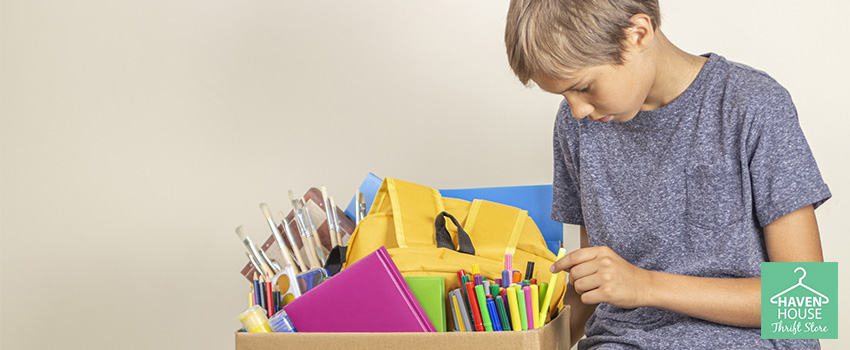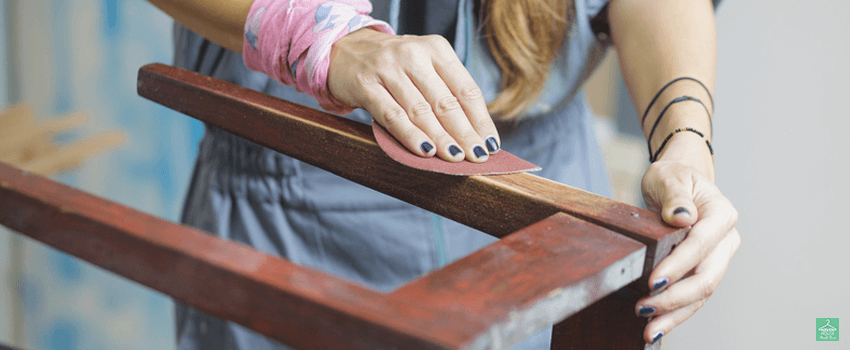Seasons and clothing trends are not the only things that change. Furniture does as well. People frequently get rid of unwanted pieces of furniture by throwing them out. The Environmental Protection Agency estimates that Americans throw away 9.69 million tons of furniture and other household goods, which go into landfills. There, they can decompose for several years.
Donating your old items and shopping for second-hand furniture is one way to reduce the waste generated by the furniture industry. You can help save the environment by giving old furniture a second chance at life through the process of upcycling. This article will guide you on how to shop for thrift store furniture and give tips on how to restore old furniture.
How to Shop for Thrift Store Furniture
The joy of discovering a one-of-a-kind second-hand treasure is hard to resist. Whether you call it thrift store artistry or vintage décor, thrift store furniture is ideal for individuals on a budget, those who want to reuse and sustainably recycle goods, and those who genuinely enjoy a contemporary and traditional style.
Here are some furniture shopping ideas to help you find great deals.
1. Create a budget.
Garage sales, flea markets, and thrift stores are the best places to locate bargains. Nevertheless, you can still overspend if you are not cautious. Therefore, before going out, determine your budget and stick to it. Besides, some vendors may only accept cash, so consider bringing cash rather than credit cards.
2. Maintain an open mind.
The fun of thrift shopping is that you never know what you’ll find. For instance, you may look for a new nightstand but stumble upon the ideal bench for the end of your bed instead. Being prepared to switch directions at a moment’s notice is an integral part of thrift store furniture shopping.
3. Don’t be hesitant.
If you see an item you like when shopping at a thrift store, don’t be afraid to buy it on the spot. Hesitating to purchase means you risk losing the item to someone else.
4. Allow your creativity to run free
If you allow your imagination to run free, you’re much more likely to find the gold hiding beneath the junk. Maintain a restoring mindset: How can you utilize this item differently than intended? You can think of restoring furniture ideas at the spur of the moment while exploring thrift stores and flea markets. When you become imaginative, ways to restore thrift store furniture are endless.
5. Ensure that it is in good condition.
Furniture fabric should be inspected thoroughly for vermin, mildew, suspicious stains, and lingering odors. Bedbugs aren’t limited to mattresses, so think twice before purchasing used upholstered furniture. Also, you should know how to clean thrifted furniture before purchasing it.
Tips on How to Restore Old Furniture
To restore thrift store furniture as close to its original state as possible entails tackling every aspect of the required restoration. Frequently, it involves making the item functional again and possibly adding value. Here are some restoring furniture ideas and tips to help you transform old furniture to its former glory.
Ensure you have adequate time for the project.
Depending on your restoration talents and the number of available hours, a simple side project might soon become a time-consuming burden. Remember that the more complicated the task, the longer it will take to complete, so be patient and allow ample time when engaging in a restoration project.
Probe and inspect.
Before restoring an item, conduct some research to establish its worth. Examine it for any labels or markings that may indicate its authenticity. Before undertaking a restoration project, consult a specialist to determine if the item has monetary value. Photograph any labels or tags for documentation. Removing a collectible antique’s finish could reduce or nullify its value, so refrain from stripping or sanding it until you are sure of its value.
Prioritize safety.
When doing a furniture restoration project, safety should be your primary concern. It would be best to wear long-sleeved clothing to protect your skin from wood strippers and varnish, which contain dangerous chemicals. In addition, use protective eyewear to shield your eyes. If you are stripping a piece, you should wear a mask and operate in a well-ventilated room to prevent exposure to potent fumes.
Clean before starting your project.
Before grabbing the sandpaper and paintbrush, ensure you know how to clean thrifted furniture. After years of neglect, a furniture item will likely have a layer of filth and dust. Removing the accumulation of dirt and dust from a piece of furniture can expose a beautiful finish underneath, so thorough cleaning and polishing may be all that is required to restore the table’s luster.
Use a sponge, vegetable-based oil soap, and warm water to scrub the furniture thoroughly. Gently use a toothbrush to get into the nooks and crannies of intricately designed furniture.
Repair or replace any broken parts.
You might get lucky and find a matching leg or knob at an antique store or on eBay, but don’t count on it. In some instances, a precise fit will necessitate custom-made parts. Furthermore, unless you believe yourself to be handy, you may require the assistance of a professional for more complex repairs such as leg replacements or almost anything connected to the structural integrity of the item.
Refinish or repaint.
Refinishing entails removing the old finish and applying a new one. Research the type of stain your wood will require. If the surface is not worth staining, it can always be painted. However, before painting, make sure the piece of furniture you are refinishing is not a collector’s item since painting a collector’s item significantly reduces its authenticity and value.
Before painting, sand the surface to remove any imperfections. Whether you’re staining or painting, you’ll need to give the piece another thorough washing after stripping and sanding to ensure a professional finish.
Prepare all the tools needed.
You’ll need specific tools to make your project a reality. Visit the sandpaper aisle and acquire a selection of grits. Purchase the coarsest material (80 to 120 grit) and the finer grades (300 to 600). Obtain two putty knives, one made of plastic and one made of metal. Additionally, obtain some steel wool and stripping gel.
You will also need Phillips and flat-head screwdrivers, a hammer, and a rubber mallet for adjusting the wood without leaving a mark.
Conclusion
Professional and amateur furniture restorers share the desire to salvage a piece of furniture and restore it to its former splendor. Furniture owners who throw away furniture see the furniture’s exterior surface, but for a lover of restoration, you see its potential. What’s not to like about it? You are saving something from the landfill and giving a forgotten item new life. Therefore keep this guide handy always and follow the tricks of the trade mentioned here when buying and restoring old furniture.
Visit Haven House and Thrift Store To Start Your Next Furniture Restoration Project.
With the vast selection of old thrift store furniture, you’ll never run out of choices for your next furniture restoration project. Let Haven House, a reliable Destin thrift store, be a part of your objective to give an item a second chance to be functional while also helping preserve the environment. Come and shop now.




